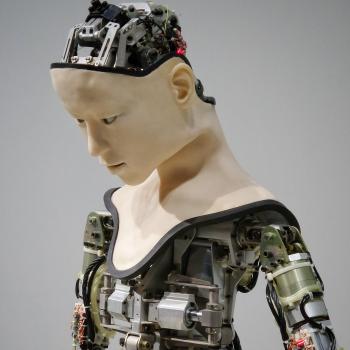 About two weeks ago, a professor at Brown University published a study but now the study is being removed at the behest of transgender activists. The study dealt with social groupings of those with gender dysphoria and possible social factors in the condition. Gender dysphoria is the medical term for those unsatisfied with their biological sex. GD is a rather rare condition with prevalence estimates in medical literature ranging from 1 in 7,100 to 1 in 100,000 (there may be the impression that it is higher, but the linked page quotes psychological diagnostic manuals). I will summarize the study, examine the issues activists use to attempt to undermine it, bring out two other profssors’ comments, and do some of my own analysis. Throughout, my comments are in RED.
About two weeks ago, a professor at Brown University published a study but now the study is being removed at the behest of transgender activists. The study dealt with social groupings of those with gender dysphoria and possible social factors in the condition. Gender dysphoria is the medical term for those unsatisfied with their biological sex. GD is a rather rare condition with prevalence estimates in medical literature ranging from 1 in 7,100 to 1 in 100,000 (there may be the impression that it is higher, but the linked page quotes psychological diagnostic manuals). I will summarize the study, examine the issues activists use to attempt to undermine it, bring out two other profssors’ comments, and do some of my own analysis. Throughout, my comments are in RED.
The Study on Rapid Onset Gender Dysphoria
Lisa Littman, a public health researcher, had asked parents in online forums about their children who developed gender dysphoria rapidly. The journal summarizes the result and conclusions.
There were 256 parent-completed surveys that met study criteria. The adolescent and young adult (AYA) children described were predominantly female sex at birth (82.8%) with a mean age of 16.4 years. Forty-one percent of the AYAs had expressed a non-heterosexual sexual orientation before identifying as transgender. Many (62.5%) of the AYAs had been diagnosed with at least one mental health disorder or neurodevelopmental disability prior to the onset of their gender dysphoria (range of the number of pre-existing diagnoses 0–7). In 36.8% of the friendship groups described, the majority of the members became transgender-identified. [Remember the clinical prevalence above, which makes the odds against this happening astronomical.] The most likely outcomes were that AYA mental well-being and parent-child relationships became worse since AYAs “came out”. AYAs expressed a range of behaviors that included: expressing distrust of non-transgender people (22.7%); stopping spending time with non-transgender friends (25.0%); trying to isolate themselves from their families (49.4%), and only trusting information about gender dysphoria from transgender sources (46.6%). [I think everyone should agree that the first three are negative consequences and the fourth might hinder critical thinking on the issue.]
Rapid-onset gender dysphoria (ROGD) describes a phenomenon where the development of gender dysphoria is observed to begin suddenly during or after puberty in an adolescent or young adult who would not have met criteria for gender dysphoria in childhood. ROGD appears to represent an entity that is distinct from the gender dysphoria observed in individuals who have previously been described as transgender. The worsening of mental well-being and parent-child relationships and behaviors that isolate AYAs from their parents, families, non-transgender friends and mainstream sources of information are particularly concerning. More research is needed to better understand this phenomenon, its implications and scope. [She takes a very measured approach looking for more research.]
Talking about any possible social cause of gender dysphoria is anathema to many transgender activists. They have tried to suppress this article under the guise of methodological issues.
Methodological Issues
The main methodological issue that is attempted to argue is selection bias. Trans activists argue that all this study says is that people who are on such sites have the opinion we expect for people on such sites. However, there are two issues with that argument.
Where Might Rapid Onset Gender Dysphoria Be Found?
Science posted about a concern about recruiting participants through websites where parents discuss their transgender children.
Critics also assailed Littman for failing to recruit participants from other websites supportive of transgender youth and for failing to interview such youths themselves. Littman defends her choice of sites, writing in an email to ScienceInsider that in order to find cases of ROGD, if it exists, she targeted the only three sites where she had seen parents discussing something like it. [So to find information about cases of Gender Dysphoria coming on rapidly, she went to places where it was more likely discussed and openly admits this doesn’t apply to all gender dysphoria.] She encouraged wide distribution of the survey beyond the websites where she launched it, she told ScienceInsider in an email, and wrote that she plans to interview youth in follow-up work. [In other words, this is just a first result in longer research.]
Discriminatory Websites
It has been claimed that biased, right-wing or anti-trans sources have been used. But just look at some other info in the study which the petition to reinstate it notes.
The three websites referenced are available for all to view, but the vast majority of contributors are secular, engaged, open-minded, mostly liberal-leaning parents.
These sites point to the probability that many kids who are today identifying as trans are in fact experiencing internalized homophobia. In other words, the contributors to these sites are concerned about the wellbeing of gay and lesbian kids, and they want to ensure that their children are not transitioning simply because they are ashamed of their sexual orientation.
Consider the study results:
- 85.9% support same-sex marriage.
- 88.2% believe trans people deserve the same rights and protections as everyone else.
Clearly, those who claim the respondents are from the far right are either misinformed or disingenuous.
Two Professors Support the Study
We’ve Seen Cases Like this
Science also quotes one professor pointing out that he has started to see cases like this.
Ray Blanchard, a professor of psychiatry at the University of Toronto in Canada who worked for 15 years in a gender identity clinic that screened candidates for sex reassignment surgery, says the paper points to a clear phenomenon: a new subgroup of adolescents, mainly women, with gender dysphoria and no behavioral signs of such dysphoria during childhood.
“Many clinicians in North America and elsewhere have been seeing such patients,” Blanchard, who worked with adults, wrote in an email, “and it has been speculated that this subgroup is one reason for the predominance of adolescent females now being seen in North America and elsewhere (Aitken et al., 2015). No one can deny the clinical reality.”
Why have no other therapies been tried
Another professor commented (with footnotes) on the study.
Given the irreversible nature of all current transgender interventions – drastic surgeries to remove healthy organs (breasts, uterus, ovaries, fallopian tubes in women; testicles in men); not to mention other serious surgeries to create a pseudo-penis or pseudo vagina); lifelong regimens of drugs that carry significant risk of cardiovascular events; and never mind that there has never been even one comparative study of cognitive-behavioral therapy or other highly applicable therapies to alleviate gender dysphoria without all the surgical & hormonal rigamarole [this is an important point as most psychological conditions are treated by therapies like this not surgery, and these therapies tend to have far fewer negative side effects] – one might suppose that transgender activists would support Dr. Littman’s research. One would be wrong. Instead, they are doing their best to suppress it. Wouldn’t it be better to know more about the young people whose “trans” ideation developed only recently? Assuming that anyone “is trans” (I’ve seen no evidence that anyone “is trans,” vs. affirmations, cross-dressing and increasingly elaborate roleplay), why not try to understand the phenomenon? Why rush these young people into “care,” as the activists insist on doing?
It is an especially dangerous time for girls and young women who get the notion that they’re “trans.” Activist physician Dr. Johanna Olson-Kennedy of Children’s Hospital Los Angeles has referred at least two 13 year old girls for radical mastectomies of their healthy breasts, as well as many other girls aged 14, 15, 16. Olson-Kennedy actually promotes the idea that such girls should have this massive surgery as quickly as possible after their self-diagnoses, even before taking testosterone.
It is rather alarming that so many people who appear to have a personal or professional stake in naturalizing the highly speculative hypothesis of “innate gender identity” have exerted themselves to suppress this one little study.
Hacsi Horvath, MA, PgCert(Sheffield)
Lecturer (adj.), Department of Epidemiology and Biostatistics
University of California, San Francisco
My Analysis
I am not an expert in transgender issues. Nonetheless, this study and the backlash raise two important questions:
- Are there social factors in some gender dysphoria? Which raises other questions like possibly different treatment.
- Do we want science or do we want ideology?
Social Factors for Gender Dysphoria
We should try and find out all causes for medical conditions. Many conditions are multi-factor where similar symptoms come from different causes. For example, depression is affected by genetics, diet and exercise, social factors, etc.: all of which can lead to lower dopamine and serotonin levels. Discovering different causes can help to propose different solutions. This study gives no indication that social factors are the only reason or that the individuals didn’t have a genetic predisposition beforehand and seek out a like-minded friendship group. It just opens up a factor that seems to correlate with gender dysphoria.
This study was just initial research to indicate that some cases seem to have a different onset from others that might be partially affected by social factors. As such, this research doesn’t offer a definitive answer for how social factors affect gender dysphoria. It just opens up the possibility they might have some effect and suggests more study.
Science or Ideology
This leads to our second question: do we want science or ideology? As a Church, we should always be interested in genuine science. (The only cases we should oppose is when there is something immoral about the research like cloning or killing humans but this study simply asked questions.) Nothing the Church definitively teaches can be disproven by science. Science, in fact, can help us understand the morals of certain situations we didn’t understand before. Science has learned a lot about genetics in recent years and now we have to consider the ethics of how to use that knowledge. However, finding out more information about DNA is never contrary to the Chruch (so long as any human DNA was given voluntarily and without serious harm to the patient). Likewise, as science understands things like gender dysphoria it encourages us to better understand the ethical questions around this topic. For example, if as Hacsi Horvath suggests, we did research on CBT or similar therapies we might find ways to help such people with far fewer side effects.
On the other hand, it appears like certain trans activists have an agenda and want to quash any research that even opens the possibility to other information. Many times, in scientific research, you’ll have studies with results that don’t quite agree which leads to further studies and meta-analyses to find the more valuable results. If the question can’t even be opened, research is at a dead end. This doesn’t help those individuals with gender dysphoria.
Conclusion
In conclusion, I’ll quote Ryan Anderson, “If this is the sort of censorship that takes place out in the open, just image what’s taking place behind closed doors. All because this research reached politically incorrect conclusion. But when lives are at stake, it’s more important to be correct than politically correct.” We need to be unafraid of the truth from wherever it comes. We need compassion for those with gender dysphoria.












